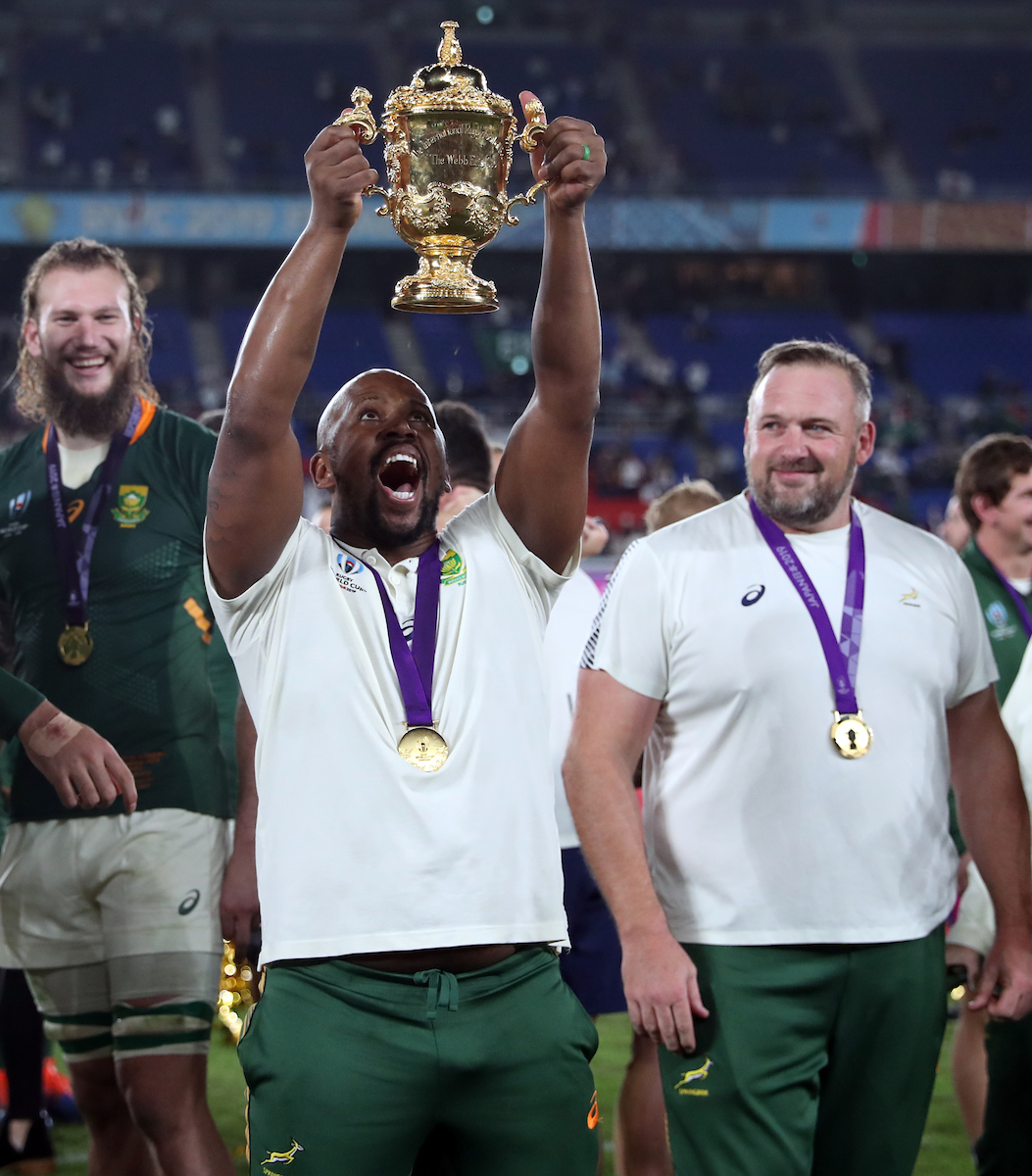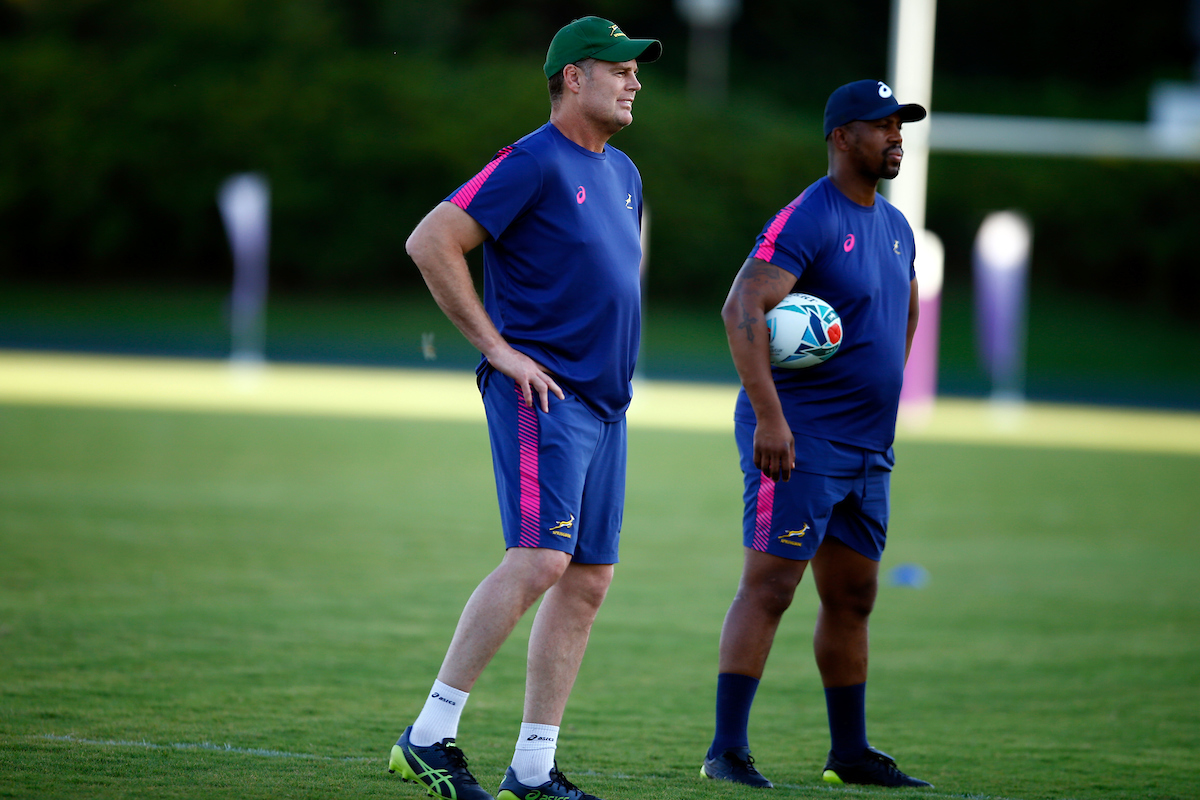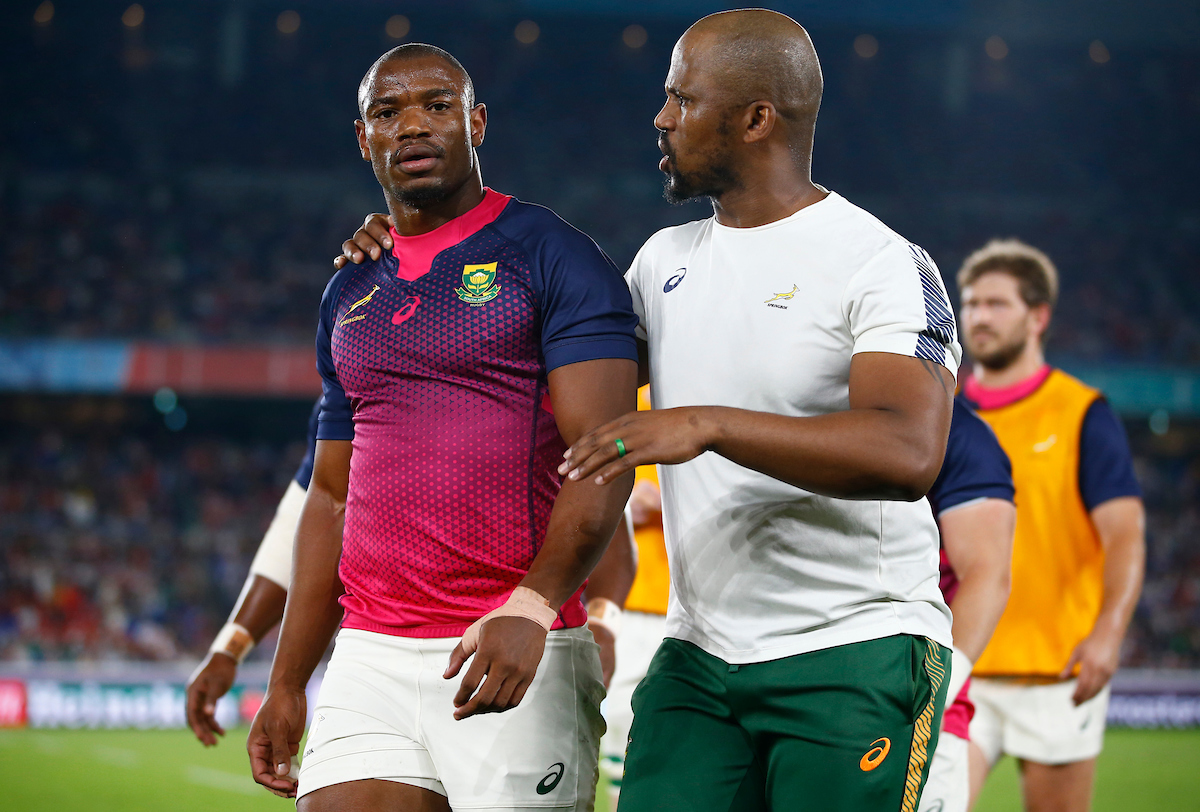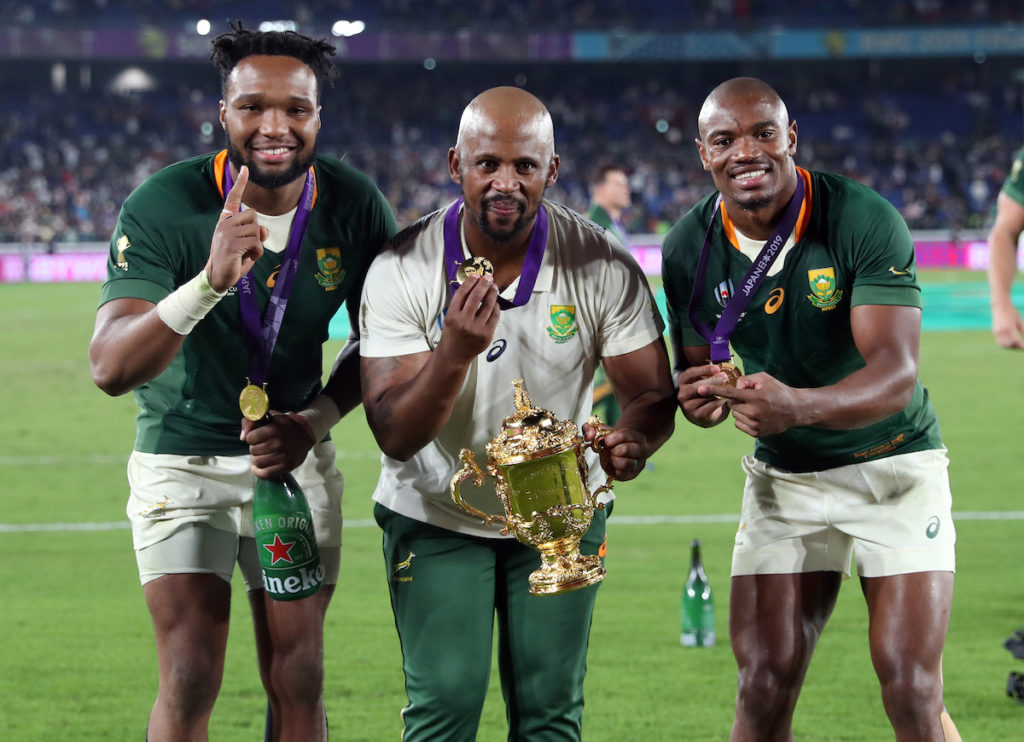JON CARDINELLI chats to Mzwandile Stick about his unconventional role with the Springboks and how it gave the team an edge at the 2019 World Cup.
Rising fears around the coronavirus have put the global sporting schedule on hold. Right now, the only way fans can get a fix of their code of choice is by watching reruns of classic matches on TV.
The 2019 World Cup final is, predictably, a favourite among South African fans. Watching it again, it’s plain to see how the coaches as well as the players had an impact.
Rassie Erasmus’ tactical approach paid dividends, as did his policy to stack the bench with six forwards. Matt Proudfoot and Jacques Nienaber made game-shaping contributions in the departments of scrummaging and defence.
UNITED IN ISOLATION: Letter from SA Rugby magazine editor
Felix Jones, who worked closely with the players to improve their skills, should take credit for the Boks’ improved execution on attack. Aled Walters, the man responsible for strength and conditioning, should take a bow after the Boks maintained their superhuman physical efforts after 10 gruelling weeks on tour.
There’s a lot we don’t see when we watch the game on TV, though. Indeed, those of us who watch the game from the stands may miss a great deal if we follow the path of the ball over the course of the contest.

Since the start of 2018, the Boks have had a coach who specializes in work rate and off-the-ball activities. Those on the inside are adamant that Mzwandile Stick’s input has played a massive role in South Africa’s turnaround, and ultimately their World Cup triumph.
‘People don’t understand how important Stick’s department is in the modern game,’ Bok coach Jacques Nienaber told me when I interviewed him for SA Rugby magazine.
‘To put it simply, it’s everything you don’t see when you watch the game on TV and it effects absolutely every other department. If the camera moves away from the breakdown, you don’t see how quickly the players are getting to their feet. That can be so important to your system, how fast the players get back into formation.
‘Stokke drives the engine,’ Nienaber added. ‘If the players can’t get off the ground quick enough we won’t be able to implement our strike move quick enough or get into defensive alignment to stop an attack. He’s probably the most important in that.’
New SA Rugby magazine issue: Am’s 2020 vision
Erasmus approached Stick with the idea when the new coaching group convened in early 2018.
‘It took me a while to get my head around it,’ the Bok assistant coach told SARugbymag.co.za. ‘Rassie was very keen to harness my knowledge as a sevens player, as sevens places a big emphasis on work rate off the ball. I worked closely with the defence and attack coaches in training. There was a push to keep the work rate high whether the players were directly or indirectly involved.
‘Rugby is a numbers game. The team that has the most numbers on its feet from play to play wins. You can’t build continuity on attack or pressure on defence without superior numbers.
‘It’s something that the team had lacked in the previous years,’ added Stick, who was part of Allister Coetzee’s management team in 2016. ‘Sure, the coaches in that set-up demanded a high work rate, but they didn’t put a system like this in place or devote enough time to these details. It’s made a huge difference.’

Nienaber also noted how much the Boks have improved under the high ball over the past two years. Stick, who has also been tasked with further developing those skills at national level, explained why off-the-ball play, kicking and aerial contesting are closely linked.
‘You need to work hard to get your team into a position to kick,’ Stick said. At the 2019 World Cup, the Boks came in for some criticism for their kick-chase tactics. When they got it right, however, they were unstoppable.
‘Once the ball is in the air, the players have to work to retrieve it. Again, it’s a numbers game. You can’t win the ball back in that scenario if you don’t have everyone playing their part to put the opposition under pressure.
‘Aerial contesting was a big work-on for the players in early 2018. The players made some good progress over the course of that season and in the 2019 Rugby Championship.
‘By the time we got to the World Cup, Makazole Mapimpi was one of our best in the air. Cheslin Kolbe was probably one of the shortest players on the field, yet he proved time and again one of the most aggressive and accurate players under the high ball. When I saw guys like that firing, it brought a smile to my face.’
Preview: Winging it with Seabelo Senatla
The Boks went into their first World Cup match wary of New Zealand’s ability to transition from defence to attack. An emphasis was placed on securing the high ball and limiting the All Blacks’ counter-attacking opportunities. On the day, however, the Boks made a few mistakes and the All Blacks punished them severely.
‘We went to the World Cup knowing that this was the key battle. We’d done our analysis of all the top teams, and we knew that teams like Wales and England had those tall wingers who specialised in the air.
‘Japan also surprised me. We beat them in the air when we played them in a friendly match a couple of weeks before the start of the tournament. In the quarter-final, however, they were up to the challenge. Clearly they’d done a lot of homework on our kicking and aerial game.’
Stick has fond memories of the World Cup final in Yokohama. Whereas they made a series of early errors against the All Blacks, they were on point from the outset against England.
‘We grew a great deal over the course of the tournament. It was pleasing to see the players’ laying down a marker so early in the final against England.
‘The set piece fired to put England under pressure. What impressed me, of course, was the way the guys got to their feet quickly and how they won the aerial battle.
‘I remember Mapimpi chasing two high balls early on. Handre Pollard was getting the ball up for our guys, and an excellent chase resulted in us winning back possession and getting two entries to England’s 22.
‘You don’t expect to enjoy that degree of success in a big game like the final. Entries to the 22 are hard to come by in that manner. Overall, I was proud of the way Mapimpi, Duane Vermeulen and others performed under the high ball.’

The Boks were under a lot pressure deep in their own territory in the period right before half time. They managed to maintain their shape and discipline, however, and repel England for more than 20 phases.
That passage of play summed up the strength and attitude of the Boks, and highlighted the contributions made by Nienaber in particular. Stick, of course, also had a part to play in preparing the players for that scenario.
‘That passage of play spoke volumes for Jacques Nienaber’s defensive system and for the players’ level of fitness. Again, what impressed me was how the players were getting up each time after making a hit.
‘At one point, England were within a couple of metres from our tryline. They were sending big guys like Maro Itoje and the Vunipola brothers into contact. Our tight-five forwards were absolutely massive in that situation. They just never stopped getting up to make the next hit.
‘Eventually we pushed them back out of our 22. It was one of those special moments you will never forget.’
Erasmus has highlighted the importance of building on the World Cup victory over the next four years. The Bok coaches have made an effort to share information with the respective franchises in an attempt to strengthen South African rugby as a whole.
‘The franchise coaches, after all, have the Bok players for most of the year,’ noted Stick. ‘It’s only going to help us at the Boks in the long run if the franchise coaches take some of our suggestions onboard and work with those players.
‘Ultimately we’re all on the same team.’
Photos: Steve Haag Sports/Hollywoodbets






